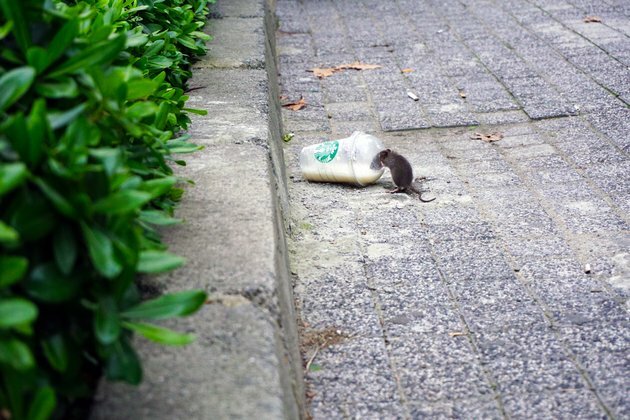Living with rats involves understanding the city as an ecosystem
The Conversation
11 Jul 2019, 03:59 GMT+10

Rats! They eat our food, chew through our property and spread all sorts of nasty diseases. And they are gross (right?), with those naked tails and quick, unpredictable movements. Rats invade our homes - our castles! - the one place where we should be safe and in control.
Over the millennia that we have lived with them, rats have proven themselves virtually impossible to expunge. They are so adaptable that they can exploit and infest virtually every corner of our cities. They avoid traps and poisons and reproduce at such a staggering rate that extermination attempts usually end up being a game of whack-a-mole... or, rather, whack-a-rat.
Is it any wonder that many cities seem to be plagued by rats? Or do the cities themselves bear some responsibility for their rat problems? This is what I have been exploring over the past 10 years as a wildlife and public health researcher with the Canadian Wildlife Health Cooperative and the University of British Columbia.
Challenges of managing urban rodents
For the most part, when it comes to dealing with rats, cities have it all wrong. For example, rat-related issues are addressed using a hodgepodge of unrelated policy and programming. At best, municipal leadership is highly fragmented; at worst, it's absent altogether.
Municipal governments may address rat infestations that occur on public properties or in buildings scheduled for demolition. Local health authorities may address infestations in food establishments or where there is a demonstrated health risk.
For the most part, people are left to fend for themselves.
Another problem is that we know very little about urban rats. There is simply not enough information about them to answer even the most basic questions like: How many rats are there? Where do they live? Why are they there? Is the problem getting worse?
Despite this lack of knowledge, cities are often willing to invest tremendous amounts of time and resources into pest control interventions, such as New York City's $32 million "war on rats."
It means that cities have no metric to determine the return on their investments, because without knowing what the rat problem looked like beforehand, there is no way of knowing whether an intervention made the problem any better.
The cohabiting solution
The key to solving this problem may lie in simply changing our perspective. Rather than viewing the city as a place entirely under human control that's being invaded by rats, we need to recognize that the city is an ecosystem and that rats live here too.
This does not mean that we should love rats, nor does it mean that we need to leave them alone. Rather, it shifts the focus to managing the ecosystem of which rats are a part, rather than focusing on the rats themselves.
Once we recognize that we are managing a system, it becomes clear that leadership and strategic planning are critical. The very concept of a system is that the whole is more than the sum of its parts; this is the antithesis of the reductionist approach that we're accustomed to that deals with infestations on a case-by-case basis.
Instead, we need to understand the urban ecosystem, just like we would if we were trying to manage polar bear populations in the Arctic or elephant populations on the savanna.
This means substantive, long-term investments in collecting data on rat populations and the specific conditions that support them, as well as the impact of any implemented interventions.
It also means understanding the interface between rats and humans. For the majority of urban centres, rats pose a relatively minor threat to people. The threats are certainly not in proportion to the amount of negative attention rats receive. This means we need to understand why we find rats so disturbing, and what can be done to reduce that fear.
Urban ecologies
An ecosystem lens also directs us to look at areas of vulnerability and resilience within the system. When it comes to rats, our homes are the most obvious place of vulnerability, where the relationship between rats and people is least acceptable. However, private residences are often the areas most ignored by municipal powers.
Also, rats and rat-related issues disproportionately affect impoverished, inner-city neighbourhoods, and residents of these neighbourhoods are particularly vulnerable to the physical and mental health impacts of living with rats. By identifying and focusing on these highly vulnerable scenarios, cities can start to make meaningful changes in how we perceive and deal with rats.
This is not to say the rest of the urban landscape should be ignored. Rather, the identification of particular areas of vulnerability needs to take place within a larger framework that uses ecosystem-based principles to address rats specifically. Examples include changing the way that garbage cans are designed and enacting tougher bylaws that enshrine the right to live in a healthy and rat-free environment.
These sorts of policies and programs that increase the resilience of the system have the potential to curtail the physical and psychological damage done by rats. The result is that co-existence with rats will come to seem no more unthinkable than our co-existence with, for instance, squirrels.
Author: Chelsea Himsworth - Regional Director for the Canadian Wildlife Health Cooperative, University of British Columbia 
 Share
Share
 Tweet
Tweet
 Share
Share
 Flip
Flip
 Email
Email
Watch latest videos
Subscribe and Follow
Get a daily dose of BC Post news through our daily email, its complimentary and keeps you fully up to date with world and business news as well.
News RELEASES
Publish news of your business, community or sports group, personnel appointments, major event and more by submitting a news release to BC Post.
More InformationInternational
SectionTravelers can now keep shoes on at TSA checkpoints
WASHINGTON, D.C.: Travelers at U.S. airports will no longer need to remove their shoes during security screenings, Department of Homeland...
Rubio impersonator used AI to reach officials via Signal: cable
WASHINGTON, D.C.: An elaborate impersonation scheme involving artificial intelligence targeted senior U.S. and foreign officials in...
Warsaw responds to migration pressure with new border controls
SLUBICE, Poland: Poland reinstated border controls with Germany and Lithuania on July 7, following Germany's earlier reintroduction...
Deadly July 4 flash floods renew alarm over NWS staffing shortages
WASHINGTON, D.C.: After months of warnings from former federal officials and weather experts, the deadly flash floods that struck the...
Putin fires transport chief, later found dead in suspected suicide
MOSCOW, Russia: Just hours after his sudden dismissal by President Vladimir Putin, Russia's former transport minister, Roman Starovoit,...
Thousands gather in Himalayas as Dalai Lama celebrates 90th birthday
DHARAMSHALA, India: The Dalai Lama turned 90 on July 6, celebrated by thousands of followers in the Himalayan town of Dharamshala,...
Sports
SectionColin Rea silences Twins, PCA parks pair of HRs in Cubs' victory
(Photo credit: Jordan Johnson-Imagn Images) Pete Crow-Armstrong crushed a pair of home runs and right-hander Colin Rea handled the...
Chargers RB Najee Harris (eye) hurt in fireworks incident
(Photo credit: Kirby Lee-Imagn Images) Los Angeles Chargers running back Najee Harris sustained an eye injury in a Fourth of July...
A's Brent Rooker, Yankees' Jazz Chisholm Jr. round out HR Derby field
(Photo credit: Nathan Ray Seebeck-Imagn Images) Athletics designated hitter Brent Rooker and New York Yankees second baseman Jazz...
Reds pitchers stifle Marlins for shutout victory
(Photo credit: Katie Stratman-Imagn Images) Nick Lodolo and four relievers combined on a four-hit shutout Thursday for the host Cincinnati...
Red Sox manager: 3B Alex Bregman (quad) to return this weekend
(Photo credit: Eric Canha-Imagn Images) The Red Sox won't wait until after the All-Star break for Alex Bregman, as manager Alex Cora...
Orioles pull off doubleheader sweep, beating Mets 7-3
(Photo credit: Mitch Stringer-Imagn Images) Jordan Westburg homered and Gunnar Henderson had three hits as the Baltimore Orioles...













